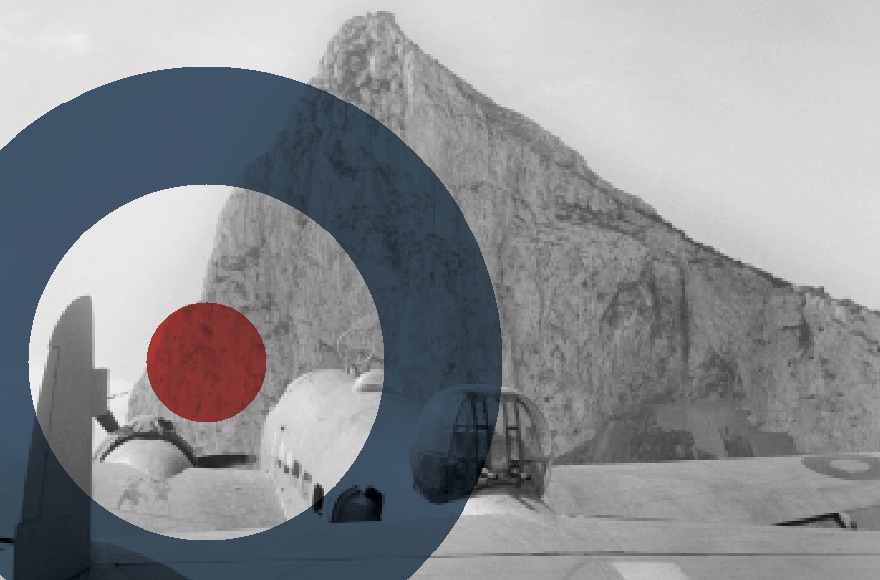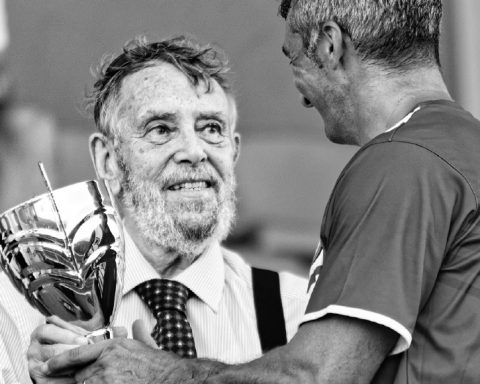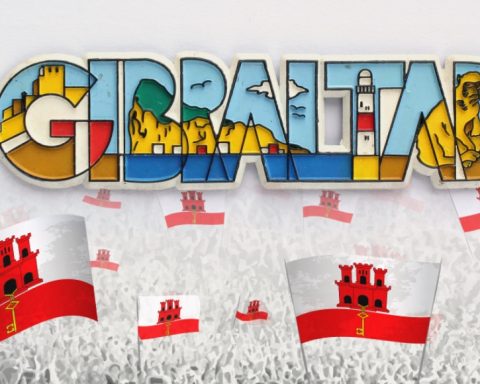PART 2
In 1931 Gibraltar Airways started a service to Tangier using a Windhover amphibian flying boat called “General Godley,” after the current Governor. Although the flights were only £1.00 each way, by January 1932 the operation ceased.
On the 18th of February that same year, General Godley summoned the Heads of all the forces in Gibraltar to discuss the provision of a landing strip in Gibraltar. Although Windmill Hill was considered, it was obvious that the only viable site was the neutral ground, even the possibility of a floating airport off Europa Point was considered. The army were totally against the use of North Front, as they were accustomed to hold their training in this area, and an airport would make this impossible. The Governor decided that steps should be taken immediately to construct an emergency landing strip, for military use only, civilian use would only be considered at a later date. On March 5th 1932, a report was provided to the Governor with sketches and a costing of £373 with an extra £10 for the re-erection of the groundsman’s quarters
Admiral Sir John D Kelly, C-in-C Atlantic Fleet, commenting on an emergency landing ground at Gibraltar, in a letter, remarked, “From a naval point of view, it is most desirable to have an emergency landing ground in the vicinity of Gibraltar. In time of war it would be essential for any aircraft defences allocated to the Rock and on ships employed in trade protection in the Western Mediterranean and Atlantic. A landing strip would also appear to be of value in certain circumstances as a link in passing aircraft reinforcements to the East by air.”
After a great deal of correspondents, including the opinion of the Ambassador in Madrid, on May 2nd 1933, the Rear Admiral in Gibraltar, advised that the airstrip had been approved, strictly in accordance with the Governor’s proposal, and that the airstrip was for the use of the Fleet Air Arm and restricted to emergencies only.
When the Royal Engineers in Gibraltar began their preparations, it was obvious that the estimates were too low, and a new estimate of £450 was put forward. The work was looked at again, following complaints about the increase, and finally it was proposed to do the work for £470. The Air Ministry agreed this figure and work began on the 14th of September 1934.
As this work required modification to the existing racecourse structure, which the Government demanded should be covered by the Racecourse itself, there were protests by both the Jockey Club and the Governor stating that the Racecourse was an outlet for the military and also provided funds to many charities in Gibraltar. Finally, after much discussion, it was agreed that the Air Ministry would bear the cost. The army continued to complain about the lack of training ground and it was not until the 10th of March 1936 that the strip was fully ready.
The situation in Europe was becoming ever more unstable, and it was soon realized that a fully-fledged airport would be required in the very near future. Events in Ethiopia, then called Abyssinia, crystallised the thinking of the War Department, and it was inevitable that the Racecourse and Victoria Gardens would be sacrificed for this purpose. Indecision in London, and the fear of upsetting the status quo with Spain over the neutral ground, was brought into focus in early 1939, when Franco began construction of fortifications on the Spanish side of the fence with the aid of German engineers. The breakdown of International Law at this time provided Britain with the opportunity to disregard Spanish sensitivity.
Nobody thought it would ever be possible to build a runway on the neutral ground. Apart from the physical difficulties, many considered the weather to be an important factor against this area being used for aircraft. The Secretary of State for the Colonies, Ormsby-Gore, wrote to the Governor, General Harrington, on the 1st of October 1936 suggesting the possibility of reclaiming land from the sea. By November of that year, Ormsby-Gore however, decided that to upset Spain outweighed any advantage of extending the runway. By August 1937, a draft plan was proposed to reclaim an area of 1000 by 800 yards. This plan would require the removal of the Blands ship yard, which did not go down too well with either the Governor or the local population. In December 1937 the Spanish Government indicated that if Britain went ahead with their plans, they would fortify the neutral ground. In November 1938, Harrington was replaced by General Ironside, who began pressing the War Office for permission to go ahead with the proposed airport. In their meeting in London, on the 28th of February, it was decided that land and air action would never come to Gibraltar, the RAF agreed they would only use Gibraltar for occasional visits in peacetime and as a staging post for refuelling units on passage. Trade protection flights would be covered by seaplanes or amphibian aircraft based permanently in Gibraltar. The C in C Mediterranean suggested that a fighter squadron be based in Gibraltar for the defence of the Rock, but the Air Ministry did not consider this an immediate possibility. While all this prevarication continued, on the 21st of November 1939, orders were given that work was only to continue on the strip, the reclamation work would not be proceeded with.
Spain continued to complain, but the work went on regardless. However, on the 26th of September 1939, few days after war was declared, the Royal Air Force arrived in Gibraltar from Malta and the 200 Group was formed. Accommodation in Gibraltar had always been a problem, the RAF set up their headquarters in the Bristol Hotel, operating London flying boats from 202 Squadron. These aircraft began patrolling the area around Gibraltar. By December of that year, 202 Squadron had carried out 95 anti U boat patrols, 56 convoy escorts, 13 reconnaissance patrols and six photographic sorties, a total of 1037 flying hours. Since the airport was an FAA base, it was essential that there was corporation between the two branches of the services. Group Captain Barrington, O/C RAF in a letter to the Commander Mediterranean Command on September 30th 1939 stated that half the prepared strip would not be available in under six months and the other half would not be ready until they could remove some of the obstructions. It was obvious to him, that only an emergency strip was being contemplated, no provision for hangers or maintenance were being considered. The Spanish authorities had been told that this was only an emergency strip and it seemed unlikely that the Foreign Office were likely to change their policy. Since there was an urgent need to patrol the sea west of Gibraltar, he suggested that a squadron be placed at Port Lautey in French West Africa.
Correspondence with London suggested that something was afoot, but still only 150 yards of prepared strip was envisaged. On the 21st of November 1939, the Governor received a letter confirming that the reclamation had been abandoned. The strip as it was, hardly provided sufficient runway for aircraft such as Hudsons and Wellingtons which were now in use by the RAF, accidents were common.
The German invasion of Sicily made the authorities realise that British Aircraft on the way to the Middle East were now at risk and need a refuelling stop in Gibraltar. In a letter to the Ambassador in Madrid, Churchill suggested that in one sense, the war itself constitutes an emergency, and as the landings would be intermittent and are either done singly and unostentatiously, it was not necessary or desirable to advise the Spanish Authorities.
On April 6th the first of the transit Wellingtons and Bombay’s were able to carry out successful landings and takeoffs from North Front with a full load.
The new OC No. 200 Group, Group Captain Rogers, along with other heads of the services, formed an Inter-Service Committee to discuss any problems associated with the airport. The committee suggested the runway be widened and extended, this was enthusiastically taken up by the Governor, Lord Gort who suggested the quickest method of building the extension was with the use of broken stone from the tunnelling, rolled, and covered in cold sprayed bitumen. Work went ahead quickly, but it was not very ambitious, and it was a surprise to all when an order was received from the Air Ministry on the 27th of October 1941 that the new runway was to be extended to a length of 1550 yards and have a width of 150 yards. This work would require 40,000 tons of fill and would extend 570 yards into the sea. The work was beyond the resources of Gibraltar, the United States had obviously been putting pressure on the UK authorities as they required Gibraltar as a stop off point for the U.S. Air Ferry Service from Africa to the United Kingdom. Top priority was given to this work and all necessary assistance was promised. The dilemma of what to do with the road to Spain which crossed the runway, caused a great deal of headache, since up to 10,000 Spaniards crossed the runway twice each day on their way to and from work in Gibraltar. These workers were essential since many worked in the dockyard and on other military sites. It was hoped that the security authorities would be able to avoid infiltration by enemy spies and the possibility of sabotage.
A visit by Air Chief Marshal Philip Joubert de la Porte, Acting C in C of Coastal Command, at the end of November 1941, suggested an extension to the runway for a total of 1800 yards, this gesture was approved by the Air Council in December 16th 1941 to a length of 1550 yards. Work began a few days later with the arrival of the first contingent of personnel and plant. Stone and rubble were blasted from the rock and dug from tunnels, then tipped into the sea to form the foundation of the runway, the dust and noise was horrendous.
Very few knew the reason for the urgency. The airfield resembled an ants’ nest, all traces of the Racecourse and Victoria Gardens had vanished, in their place buildings were erected. Lord Gort took a keen interest in the work and visited the airport each morning, he obviously knew what was going on. Trucks carrying the scree and rocks from the quarries formed an almost continuous train, requiring the trips to be scheduled, allowing, approximately 30 minutes for each round trip. The daily total averaged 7500 tons. On 12 January 1942, the runway had reached 985 yards and was estimated to reach 1150 yards by the end of April.
Attacks on Malta was causing problems with aircraft transiting there for the Middle East, it was therefore imperative that the work in Gibraltar be carried out with the urgency, as it was proposed to transit Wellingtons, which had been stripped to the bare minimum in order to fly from Gibraltar directly to the Egypt. Even under these conditions, the Wellingtons would be unable to take off with a full load of fuel until the runway had been extended to nearly 1550 yards.
Following an urgent message from London, Lord Gort replied “possibly 3rd April.” The response from the Chief of Imperial Staff was “please convey my congratulations to all concerned.”
Group Captain Harrington with No. 200 Group was carrying out operations using flying boats based in the harbour. Six Fleet Air Arm Swordfish, operating from the emergency strip, assisted the Group. The headquarters of the Group was at the Tower, with the administration based at No.2 Cathedral Square. The operational control of the Navy aircraft was passed to the RAF.
The Governor had stipulated that no operational flights should take place from Gibraltar, however aircraft carrying anti-submarine patrols were permitted to load 10lb anti-submarine bombs. There was confusion between London and Gibraltar as what exactly the situation was with regard to diplomacy. The local administration believed London did not appreciate the situation in Gibraltar.
Accommodation was a major problem, every possible unoccupied building had been converted for the military, the town was brimming with military personnel.
In February 1939, 202 Squadron under the command of Wing Commander Blake with the four aircraft, was transferred to Gibraltar. Having provided moorings, test flights, and other preparations, the rest of the Squadrons’ London flying boats arrived on the 10th of September. They were operational next day. In October 1939, the Squadron made its first sightings of a U Boat but the attack was unsuccessful, they also found the German merchant ship Glucksburg leaving Cadiz Harbour, having signalled HMS Wishart, they shadowed the vessel until the destroyer arrived, however the German vessel ran itself aground on the Spanish Coast.
From its arrival in September to the end of December 1939, the Squadron carried out 95 anti U Boat patrols, 56 convoy escorts, 13 reconnaissance patrols and six photographic sorties, a total of 1027 flying hours.
Maintenance of these aircraft had been a problem but the arrival of the RAF depot ship Dumana, provided some short term relief. The navy had been reclaiming some land at the north eastern end of the dockyard, this land was ceded to the RAF for the duration of the war, and it was developed for, what was to become RAF New Camp, with hangars, slipway, accommodation and maintenance facilities. Around this time Wing Commander Blake relinquished command of No.202 Squadron.












